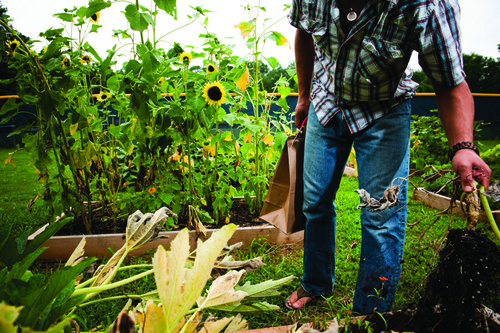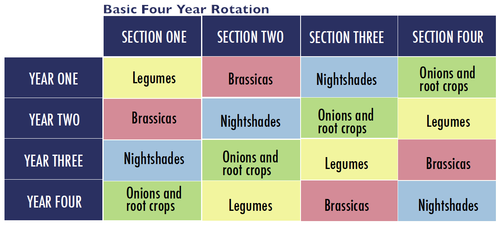
One of the most effective ways to deal with pests and disease organically is by rotating crops. This practice can be a little difficult in a backyard garden due to limited space, but it should be part of your on-going maintenance plan. Here are some key benefits of rotating crops:
Pest and Disease Control
Plants from the same families tend to be attacked by the similar pests and diseases, which is why crop rotation is largely based on plant families. Moving crops around the garden according to plant family can help decrease the population of pests and buildup of certain pathogens in the soil.
Soil Erosion
A common mistake is to leave soil exposed for long periods of time. A benefit of crop rotation is to plant crops back to back prevents soil from being dried up by the sun or washed away by rain. This is especially true with large farms that leave fields fallow for long periods of time, which can result in serious runoff issues and nutrient leaching. Cover crops help hold the soil together thus preventing any loss of topsoil due to wind, water or sun. They also improve the overall fertility, biology and structure of the soil.

Nutrient Management
Some crops take more nutrients out of the soil than others, with the hungriest of them being referred to as “heavy feeders.” Heavy givers” include cover crops and green manures, which can help put nutrients and organic matter back into the soil between crop cycles. A good rotation for nutrient cycling is to plant a heavy giver, followed by a light feeder, followed by a heavy feeder, then repeat the cycle. See the list below for examples of heavy, medium and light feeders. Heavy givers include cover crops and green manures, which help put nutrients and organic matter back into the soil between crop cycles. If farmers or gardeners continue to grow the same crops year after year, they will deplete the nutrients in the soil, which will require them to apply more fertilizer, water and pest and disease controls each year.
Farmer D’s 4-Year Crop Rotation Plan:

Other Helpful Hints:
– Incorporate cucurbits (cucumbers, melons and squash), lettuce and corn wherever convenient; avoiding growing them in the same place too often.
– Perennial crops such as asparagus and rhubarb do not fit into the rotation.
– For a three-year rotation, combine legumes with onions and roots in one section, follow with brassicas, then nightshades.
Learn more about crop rotation and home gardening in Farmer D’s Citizen Farmers.
0 COMMENTS